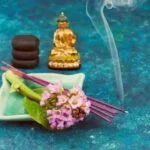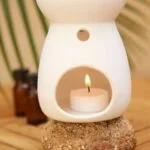When it comes to natural remedies and holistic healing, aromatherapy oils and essential oils often take center stage. While they may seem interchangeable at first glance, there are distinct differences between these two types of oils that can impact their uses and benefits.
In this article, we will delve into the world of aromatherapy oils and essential oils, exploring their unique properties, extraction methods, compositions, applications, safety considerations, and more. By understanding the difference between these two oil categories, readers will gain a deeper insight into how each can be effectively utilized for various purposes.
In our exploration of aromatherapy oils and essential oils, it is crucial to clarify the terminology. Aromatherapy oils specifically refer to the fragrant substances that are used in aromatherapy practices. These oils are derived from a variety of sources including flowers, fruits, leaves, barks, roots, and other plant parts.
On the other hand, essential oils are a broader category encompassing not just aromatic compounds but also bioactive constituents with therapeutic properties. It is important to note that not all essential oils are suitable for aromatherapy purposes due to differences in potency and composition.
Understanding the distinction between these two oil types is fundamental for those interested in utilizing natural remedies for wellness or therapeutic purposes. In subsequent sections of this article, we will explore what exactly sets aromatherapy oils and essential oils apart – from extraction methods to chemical compositions – shedding light on their individual benefits and potential applications.
Additionally, we will delve into labeling discrepancies within the industry to help readers navigate through product selections while aiming for high-quality options with reliable certifications.
As we embark on this journey into the world of aromatherapy oils and essential oils, it becomes clear that these terms cannot be used interchangeably despite their similarities. By understanding the differences, readers can make informed choices about which type of oil is most suitable for their specific needs and desired outcomes. So, let’s dive deeper into this captivating subject to unravel the secrets behind aromatherapy oils and essential oils and discover the unique wonders they hold within.
What Are Aromatherapy Oils
Aromatherapy oils, also known as essential oils, are highly concentrated plant extracts that are used for various therapeutic purposes. These oils are derived from different parts of plants such as flowers, leaves, bark, and roots. Aromatherapy oils have been used for centuries in traditional medicine practices and are known for their aromatic properties.
Exploring the concept of aromatherapy oils, it is important to understand how they are used. These oils can be used in a variety of ways including inhalation, topical application, and even ingesting in some cases. Inhalation is one of the most common methods of using aromatherapy oils as it allows for the aroma to reach the olfactory system and trigger certain responses in the body.
Topical application involves diluting the essential oil with a carrier oil and applying it directly onto the skin for absorption. Ingestion should only be done under the guidance of a trained professional as some essential oils can be toxic if consumed improperly.
The uses of aromatherapy oils are vast and diverse. They can be used to alleviate stress, improve mood, promote relaxation, enhance focus and concentration, relieve pain and inflammation, support digestion and respiratory health, boost immunity, and even aid in sleep quality.
Each essential oil has its own unique set of properties and benefits. Some popular examples include lavender for relaxation and sleep support, peppermint for headache relief and energy boost, eucalyptus for respiratory health improvement, tea tree for its antimicrobial properties, and lemon for mood enhancement.
What Are Essential Oils
Essential oils are highly concentrated plant extracts that capture the volatile compounds of various plants. These oils are extracted through a meticulous process known as steam distillation, which involves steaming the plant material and collecting the condensed liquid. The resulting essential oil contains the natural essence of the plant, including its aroma and therapeutic properties.
The Nature of Essential Oils
Essential oils are derived from different parts of plants, including flowers, leaves, stems, bark, or roots. Each essential oil has a unique chemical composition that contributes to its distinct therapeutic benefits. These compounds can include terpenes, aldehydes, esters, and phenols. For example, lavender essential oil is known for its calming properties due to its high content of linalool and linalyl acetate.
The potency of essential oils is impressive; it takes a large amount of plant material to produce a small quantity of oil. This concentration makes them effective for various health and wellness purposes. Essential oils can be used topically when diluted with a carrier oil or inhaled through aromatherapy practices.
The Benefits of Essential Oils
Essential oils have been used for centuries for their numerous benefits. They can be utilized for physical ailments such as relieving sore muscles or reducing inflammation, as well as addressing emotional and mental well-being by promoting relaxation or uplifting mood.
One notable advantage of essential oils is their versatility in application methods. They can be incorporated into massage oils, bath products, skincare formulations, or diffused in the air using diffusers or sprays. The wide range of available essential oils also allows individuals to find specific scents that resonate with them personally.
In addition to their potential health benefits, many people enjoy using essential oils for their pleasant smells. Aromatherapy practices often involve using essential oils to create an aromatic ambiance in homes or spa settings.
Overall, understanding the nature and benefits of essential oils is crucial for anyone seeking to explore natural remedies and enhance their well-being. With proper knowledge and usage, essential oils can become valuable additions to one’s daily self-care routine.
Aromatherapy Oils vs. Essential Oils
A aromatherapy oils and essential oils may be used interchangeably by some, they are not actually the same thing. Both types of oils have their own unique properties and uses in the field of holistic wellness. It is important to understand the differences between these two types of oils in order to make informed decisions about which one to use for different purposes.
Aromatherapy oils, also known as fragrance or perfume oils, are primarily used for their aromatic properties. These oils are typically created by blending a combination of natural or synthetic fragrance compounds with carrier oils. The purpose of using aromatherapy oils is to create a pleasant scent that can enhance mood, relax the mind, and promote overall well-being. They are commonly used in diffusers, scented candles, body products such as lotions and massage oils, and home fragrance products.
Essential oils, on the other hand, are highly concentrated plant extracts that capture the volatile compounds found in various parts of plants including leaves, flowers, bark, and roots. They are obtained through methods such as steam distillation or cold-pressing.
Essential oils contain the true essence of the plant from which they are derived and have therapeutic properties associated with them. These properties can range from providing relief from common ailments like headaches or insomnia to supporting skin health and improving digestion.
While there may be overlap between certain essential oils and aromatherapy oils in terms of their basic constituents and potential benefits they offer, it is important to note that not all aromatherapy oils contain essential oil components – many are synthetic fragrances created solely for their scent. Furthermore, essential oils tend to be much more potent than aromatherapy oils due to their high concentration levels. This means they need to be used more cautiously and with proper dilution techniques.
Key Differences
Steam Distillation: The Preferred Method for Essential Oils
One of the key differences between aromatherapy oils and essential oils lies in the extraction methods used to obtain these oils. Steam distillation is widely regarded as the preferred method for extracting essential oils. During steam distillation, plant material is placed in a still, and steam is passed through it.
As the steam passes through the plant material, it breaks down the essential oil compounds, which are then vaporized. The vapor is then condensed back into a liquid state, resulting in the pure essential oil.
Steam distillation allows for the separation of volatile compounds from plant materials without causing degradation or alteration of their chemical composition. This method is commonly used to extract essential oils from flowers, leaves, bark, and other aromatic plant parts. It produces concentrated and potent essential oils that are highly valued for their therapeutic properties.
Cold-Pressing: The Common Extraction Method for Aromatherapy Oils
In contrast to steam distillation, cold-pressing is commonly employed to extract aromatherapy oils. Cold-pressing involves physically pressing or grinding plant materials to release their natural oils. This method is often used for fruits and citrus plants because they have a high oil content in their peels.
The cold-pressing process does not involve heat or solvents, preserving the integrity of the natural components found in these oils. However, since cold-pressed aromatherapy oils are not as concentrated as essential oils obtained through steam distillation, they are often diluted with carrier oils before use.
It’s important to note that there may be variations in extraction methods within each category of oil depending on factors such as the specific plant being used and the desired end product. Therefore, understanding these different extraction methods can help consumers choose suitable products based on their needs and preferences.
Composition Comparison
When comparing aromatherapy oils and essential oils, it is important to analyze their chemical components. Essential oils are complex mixtures of volatile compounds that are extracted through methods such as steam distillation. These compounds can vary greatly depending on the plant source and extraction process used. On the other hand, aromatherapy oils are potential blends with carrier oils, which dilute the concentration of essential oil and provide a base for application.
Essential oils contain a wide range of chemical constituents, including terpenes, alcohols, esters, and ketones. These compounds contribute to the unique aroma and therapeutic properties of each oil. For example, lavender essential oil contains linalool, a compound known for its relaxing and sedative effects. Eucalyptus essential oil contains eucalyptol, which has expectorant properties and can help relieve congestion.
Aromatherapy oils, on the other hand, are often diluted with carrier oils before use. Carrier oils serve as a base for essential oils and help facilitate their absorption into the skin during massage or topical application. Common carrier oils include sweet almond oil, jojoba oil, and coconut oil. The addition of carrier oils not only dilutes the concentration of essential oil but also provides additional benefits from the carrier oil itself.
Applications and Uses
Aromatherapy: Focusing on the Therapeutic Benefits of Fragrance
Aromatherapy is a form of alternative medicine that utilizes the therapeutic effects of aromatic substances, specifically essential oils. It focuses on harnessing the power of fragrance to promote physical and psychological well-being. The practice of aromatherapy involves applying or diffusing essential oils to stimulate the olfactory system, which can have a direct impact on the brain and body.
One key aspect of aromatherapy is its association with relaxation and stress relief. Certain essential oils, such as lavender and chamomile, are known for their calming properties and can be used to create a tranquil atmosphere in settings like spas or bedrooms. Inhaling these fragrances can help reduce anxiety, encourage better sleep, and promote overall relaxation.
In addition to promoting emotional well-being, aromatherapy also has potential benefits for physical health. Many essential oils possess antimicrobial properties that can help combat bacteria, viruses, and fungi. Oils like tea tree and eucalyptus are commonly used for their antiseptic and respiratory-supporting properties. They can be incorporated into massage oils, bath salts, or creams for topical application or diluted in water for inhalation.
Overall, aromatherapy seeks to enhance both mental and physical health through the use of essential oils’ aromatic compounds. By understanding which scents correspond to certain therapeutic effects, individuals can tailor their aromatherapy practices to target specific needs or conditions they may be experiencing.
To further differentiate aromatherapy from essential oil therapy, it is important to highlight the distinct uses and benefits of essential oils themselves.
Essential Oils: Utilizing the Natural Compounds for Healing and Wellness
Essential oils are highly concentrated extracts derived from plants through various extraction methods. These natural compounds capture the plant’s aromatic essence along with its potent therapeutic properties. Unlike aroma therapy oils which are often diluted with carrier oils during preparation.
Essential oils can be used in a variety of ways, including topical application, inhalation, and ingestion. They are commonly employed in massage therapy as they can penetrate the skin and enter the bloodstream, allowing their healing properties to reach various parts of the body. Additionally, essential oils can be utilized for respiratory support by inhaling them through vaporizers, diffusers, or steam inhalation methods.
The benefits of essential oils extend beyond physical health. They can also have profound effects on mood and emotional well-being due to their ability to cross the blood-brain barrier. Essential oils such as citrus scents (e.g., lemon and grapefruit) can uplift the mood and promote feelings of happiness, while oils like peppermint and rosemary can improve focus and concentration.
It is important to note that essential oils should be used with caution and proper dilution guidelines. Some oils may cause skin irritation or sensitization when applied topically without dilution. It is advisable to consult a qualified aromatherapist or healthcare professional for guidance on safe usage practices before incorporating essential oils into one’s wellness routine.
Understanding the different applications and uses of both aromatherapy and essential oil therapies allows individuals to make informed decisions about which approach best suits their needs. Whether seeking relaxation and emotional support through fragrance or employing natural compounds for physical healing, both approaches offer unique benefits for overall well-being. By exploring these therapies further, individuals can harness the power of scent to enhance their quality of life.
| Aromatherapy | Essential Oils |
|---|---|
| Focuses on therapeutic benefits of fragrance | Utilizes natural compounds for healing |
| Promotes relaxation and stress relief | Can be used topically, through inhalation, or ingestion |
| Can have positive effects on emotional well-being | Penetrates the skin and can enter the bloodstream |
| Incorporated into massage oils, bath salts, etc. | Has antimicrobial properties and respiratory support |
| Aromatic compounds stimulate the olfactory system | Can uplift mood and improve focus/concentration |
Safety Considerations
When it comes to using aromatherapy oils and essential oils, it is important to be aware of the potential risks and take necessary precautions. Both types of oils can have powerful effects on the body and should be used with caution, especially when applied topically or ingested. Understanding how to safely use these oils will help prevent adverse reactions and maximize their therapeutic benefits.
Aromatherapy oils generally have milder dilution compared to essential oils, making them less likely to cause skin irritations or sensitivities. However, it is still recommended to perform a patch test before applying any aromatherapy oil directly onto the skin. This can help identify any potential allergic reactions or adverse effects.
On the other hand, essential oils are highly concentrated and should always be diluted before use. Direct application of undiluted essential oils can lead to skin irritation, burns, or even toxicity. It is crucial to follow proper dilution guidelines and use a carrier oil such as coconut oil or jojoba oil when applying essential oils topically.
In addition to dilution, there are specific safety considerations for different populations, such as pregnant women, infants, and individuals with certain medical conditions. Some essential oils may not be suitable for use during pregnancy due to their potential effects on hormones or uterine contractions. It is important to consult with a healthcare professional or aromatherapist before using essential oils in these situations.
| Type of Oil | Safety Measures |
|---|---|
| Aromatherapy Oils | – Perform a patch test before applying directly on the skin.
|
| Essential Oils | – Always dilute essential oils before use.
|
By following these safety considerations and precautions, you can minimize the risk of any adverse reactions and safely enjoy the benefits of aromatherapy oils and essential oils. It is also important to note that proper storage is crucial to maintain the integrity and quality of these oils. Keep them in dark, glass bottles away from direct sunlight or heat to prevent degradation.
Understanding Labeling and Terminology
Navigating the world of aromatherapy and essential oils can be overwhelming, especially when it comes to understanding the labeling and terminology used in the industry. This section aims to provide clarity and guidance on how to navigate through the jargon often found on product labels.
- a. Regulation Discrepancies: Lack of Standardization in the Industry.
One of the challenges when trying to understand labeling and terminology in this field is the lack of standardization across the industry. Unlike pharmaceuticals or food products, where regulations are more stringent, there is no universally accepted regulatory body or set of guidelines for aromatherapy and essential oils. This means that different brands may use varying terms to describe their products or employ different labeling standards.
- b. Identifying Quality Products: Labels, Certifications, and Trusted Brands.
Given the lack of standardized regulation, it becomes crucial for consumers to educate themselves on how to identify quality products. One way to do this is by paying close attention to labels. Look for terms such as “100% pure,” “organic,” or “therapeutic grade” on product labels. While these terms are not regulated, they do indicate that the brand has taken certain measures to ensure a higher quality product.
Certifications from reputable third-party organizations can also help determine product quality. Some examples include USDA Organic certification, Ecocert certification, or certifications from organizations like the National Association for Holistic Aromatherapy (NAHA) or International Aromatherapy and Aromatic Medicine Association (IAAMA).
Finally, relying on trusted brands with a track record of producing high-quality products can also be beneficial. Researching and reading reviews about different brands can provide insights into their reputation within the industry.
Conclusion
In conclusion, it is important to understand the distinction between aromatherapy oils and essential oils. While they may seem similar, they have different properties, extraction methods, compositions, and applications. Aromatherapy oils are typically diluted blends of essential oils with carrier oils, focusing primarily on the therapeutic benefits of fragrance. On the other hand, essential oils are concentrated natural compounds obtained through steam distillation or cold-pressing methods and are used for their healing and wellness properties.
The key differences lie in the extraction methods used to obtain these oils. Essential oils are most commonly extracted through steam distillation, a process that involves using heat to vaporize the volatile compounds from plant materials. This method ensures that only the purest form of essential oil is obtained.
In contrast, aromatherapy oils are usually cold-pressed, where pressure is applied to extract the oil without using heat. This method allows for a milder dilution and maintains the fragrance qualities of the oil.
Another significant difference between these two types of oils lies in their chemical composition. Essential oils consist of complex mixtures of volatile compounds that contribute to their unique aroma and therapeutic effects. On the other hand, aromatherapy oils are often blended with carrier oils such as almond or jojoba oil to create a milder version suitable for topical application or diffusing.
In terms of applications and uses, aromatherapy primarily focuses on creating a pleasant ambiance and enhancing mood through fragrance therapy. Essential oils, on the other hand, can be utilized for various purposes such as promoting relaxation, reducing inflammation, boosting immunity, improving digestion, and more.
While both types of oils offer potential health benefits, it is important to consider safety precautions when using them. Aromatherapy oils generally have milder dilutions and fewer side effects compared to essential oils. However, it is still crucial to properly dilute them before application and be aware of any allergies or sensitivities. Essential oils, being highly concentrated, require cautionary measures and should always be used in the recommended dosage to avoid adverse reactions.
Navigating the world of essential oils and aromatherapy can be challenging due to the lack of standardization in labeling and terminology. It is important to educate oneself about reputable brands, look for certifications or quality labels, and seek guidance from trusted sources before purchasing these products.
Frequently Asked Questions
What is the difference between essential oil and aromatherapy oil?
The main difference between essential oil and aromatherapy oil lies in their intended use and composition. Essential oils are concentrated extracts derived from plants through various extraction methods. These oils contain the natural essence of the plant and retain its characteristic fragrance and therapeutic properties.
On the other hand, aromatherapy oils, also known as fragrance oils or cosmetic-grade oils, are synthetic compositions created to mimic specific scents. While essential oils come directly from plants, aromatherapy oils are human-made imitations.
Are essential oils the same as aromatherapy?
Essential oils and aromatherapy are related but not entirely interchangeable terms. Essential oils are a key component of aromatherapy but do not encompass the entire practice itself.
Aromatherapy refers to a holistic healing practice that utilizes aromatic substances to promote physical, mental, and emotional well-being. While essential oils play a crucial role in aromatherapy by providing the therapeutic benefits derived from plants, aromatherapy can also incorporate other elements such as massage techniques, inhalation methods, or diffusion for optimal results.
Do essential oils work for aromatherapy?
Yes, essential oils do work effectively for aromatherapy purposes when used correctly. Essential oils have been utilized for centuries in various cultures due to their therapeutic properties and potential health benefits. Through inhalation or topical application (with appropriate dilution), essential oils can affect the limbic system in our brain, which is responsible for emotions and memories.
Different essential oils possess distinct properties that make them suitable for specific therapeutic purposes like relaxation, stress relief, uplifting mood, improving sleep quality, or soothing certain physical ailments. However, it’s important to note that individual responses may vary, and consulting with a certified aromatherapist can provide personalized guidance on essential oil selection and usage based on one’s specific needs or health conditions.

Are you looking for a natural way to improve your health and wellbeing?
If so, aromatherapy may be the answer for you.





